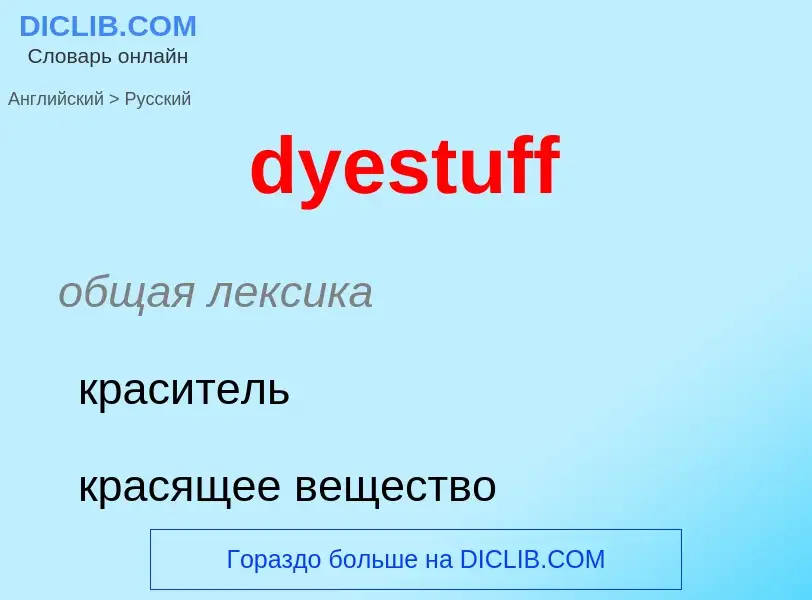Vertaling en analyse van woorden door kunstmatige intelligentie ChatGPT
Op deze pagina kunt u een gedetailleerde analyse krijgen van een woord of zin, geproduceerd met behulp van de beste kunstmatige intelligentietechnologie tot nu toe:
- hoe het woord wordt gebruikt
- gebruiksfrequentie
- het wordt vaker gebruikt in mondelinge of schriftelijke toespraken
- opties voor woordvertaling
- Gebruiksvoorbeelden (meerdere zinnen met vertaling)
- etymologie
dyestuff - vertaling naar russisch
общая лексика
краситель
красящее вещество
общая лексика
органический краситель
Wikipedia
A dye is a colored substance that chemically bonds to the substrate to which it is being applied. This distinguishes dyes from pigments which do not chemically bind to the material they color. Dye is generally applied in an aqueous solution and may require a mordant to improve the fastness of the dye on the fiber.
The majority of natural dyes are derived from non-animal sources: roots, berries, bark, leaves, wood, fungi and lichens. In the 21st century, most dyes are synthetic, i.e., are man-made from petrochemicals. Some are extracted from insects and or minerals.
Synthetic dyes are produced from various chemicals. The great majority of dyes are obtained in this way because of their superior cost, optical properties (color), and resilience (fastness, mordancy). Both dyes and pigments are colored, because they absorb only some wavelengths of visible light. Dyes are usually soluble in some solvent, whereas pigments are insoluble. Some dyes can be rendered insoluble with the addition of salt to produce a lake pigment.

![Yarn drying after being dyed in the early American tradition, at [[Conner Prairie]] [[living history museum]]. Yarn drying after being dyed in the early American tradition, at [[Conner Prairie]] [[living history museum]].](https://commons.wikimedia.org/wiki/Special:FilePath/Conner-prairie-yarn-drying.jpg?width=200)
![Dyeing wool cloth, 1482: from a French translation of [[Bartolomaeus Anglicus]] Dyeing wool cloth, 1482: from a French translation of [[Bartolomaeus Anglicus]]](https://commons.wikimedia.org/wiki/Special:FilePath/Dyeing British Library Royal MS 15.E.iii, f. 269 1482.jpg?width=200)
![A [[woman]] dyeing her [[hair]]. A [[woman]] dyeing her [[hair]].](https://commons.wikimedia.org/wiki/Special:FilePath/Hårfärgning - 2007.jpg?width=200)
